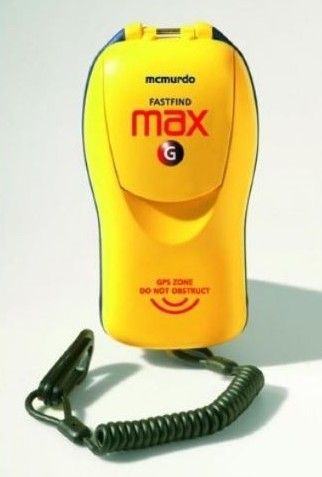Issue Eleven. Autumn/Winter 2008.
Page 6
Scran bag!!
Spring sailing WM and Trafalgar How not To! Owners Tips Walton BBQ Bird Alone
This page will be a collection of snippets and information, gleaned from owners and friends, newspapers, magazines and scurrilous here-say as well no doubt, hopefully all factual, as far as can be ascertained, and maybe humorous, we all need a giggle some times! Have you found a snippet we could add?
|
|
|||
October 2008.
The charity, which saves hundreds of lives every year currently pays an annual £48,000 at a discounted rate of 50 per cent. It relies on donations and fears the move will have a disastrous impact on fund-raising. Peter Bradley, RNLI operations staff officer, said: "It's a lot of money when you think in terms of lifeboat days and little old ladies collecting pound coins."
"We could buy several inshore lifeboats for the same amount."
"The Government rely on us to provide this search-and-rescue service, at a cost of £124 million a year, but they want to charge us for doing it!"
Ofcom has set out plans to bring "market forces" into maritime and civil aviation communications in a policy it calls Administered Incentive Pricing.
£250,000 represents an awful lot of charity collections, even more so in the current economic climate so, if like me you feel strongly enough
about this, please sign the petition below.
November 2008, John Stevens find more snippets!
|
Thinking of trading up from an Eventide 24?
found on the BBC website by Christine...
Saddam's luxury yacht up for sale |
|
The Iraqi government is to sell a luxury yacht which was previously owned by the late leader, Saddam Hussein. The 82m (270ft) Ocean Breeze is equipped with swimming pools, an operating theatre, a helipad and an escape tunnel leading to a submarine. Iraq has decided to sell the yacht after winning a legal battle with a Jordanian company over its ownership. The yacht is expected to sell for millions of dollars, but brokers have said the decor may not suit all tastes. It has been decorated in what has been described as "Arabesque" style, with mahogany carvings, gold tap fittings and brightly-coloured deep-pile carpets. The ship, originally called Qadissiyet Saddam after a historic Iraqi military victory, was built in a Danish shipyard in 1981 by workers sworn to secrecy. But, despite its luxurious facilities, Saddam Hussein is never thought to have stayed on board himself, fearing political instability if he left Iraq. So for most of its life, Ocean Breeze was moored in Saudi Arabia - until last year, when it arrived in the French port of Nice and remained there while its ownership was determined. A Cayman Islands firm, part-owned by King Abdullah of Jordan, had claimed that Saddam had given the yacht to them, but a French court ruled last summer that it should be returned to the Iraqi government. Government spokesman Ali al-Dabbagh said the ministries of finance and foreign affairs would be responsible for the sale. Brokers have suggested that in the current financial climate, it could be difficult to sell a vessel which is luxurious but not up to the standards of more modern yachts - it does not, for example, have a gym and boasts only one helipad. However, offers are expected in the region of $35m (£18m), and one broker suggested the yacht's history could be "a good selling point".
|
|
Secret cavern found
under Lord Nelson's favourite tavern...

SECRET chambers outside the site where Nelson spent his last day on land have been uncovered by road workers drilling a hole in Portsmouth.
Council contractors were left gobsmacked when routine work revealed a series of
hidden tunnels and rooms outside the site of the George Hotel in High Street,
Old Portsmouth where the famous admiral stayed before sailing for the
Battle of Trafalgar in 1805.
Conservation officers will visit the site today to try to unravel its secrets.
The discovery has sparked excitement and speculation, with theories including an
escape route for naval officers and tunnels used to store smuggled rum.
Brothers Kevin and Steven Glover, who work for Portsmouth City Council's
highways contractor Colas, made the discovery while replacing a lamp-post. It
was so unexpected, they nearly fell into the seven-foot hole they'd unearthed.
Kevin said: 'I was drilling through the pavement, but where it should have given
way to earth, there was thin air. I was pushing down on a heavy road hammer, and
it was only because Steven pulled me back that me and the drill didn't plummet
straight through.'
Steven said: 'There's an archway into a room, then tunnels leading off in
different directions. We found a horseshoe down there, but it's too dark to see
much. 'We've been talking to people who live nearby, and they've said they
could lead as far as Portsdown Hill. They think it could be an escape route for
navy officers like Nelson, or smugglers' tunnels.' He added: 'Whatever it
is, we'd be really interested to find out. It'd be great if we have unearthed a
piece of the city's history.'
The George Hotel, where Nelson stayed, was destroyed by Luftwaffe bombs in 1941.
In its place is The George Court. Resident Caron Berry, 30, who has lived
there for six months with her husband, said: 'It's really exciting. When we
moved here we were both excited we'd be living where Nelson stayed, and now
here's another piece of history uncovered a few yards outside.'
Near-neighbour Sally Cronin added: 'I've been here for 50 years. When we were
children lots of the area was a bombsite and we were told there were tunnels all
around. 'We were told they were smugglers' tunnels, where French sailors
unloaded barrels of rum. In those days, every other building was a tavern. If
so, they'd have been transporting it right under the Customs building in the
dockyard.'
English Heritage, Portsmouth Museums and Portsmouth City Council have all
confirmed their interest in the chambers and tunnels. Council conservation
officer John Pike said: 'It's always good when historical finds are made, and I
will be down there in the morning to take a look around.
'It's an historic area of the city and I'm looking forward to see what we can
find.'
Again thanks to John Stevens for finding
another interesting snippet!
January 2009
RNLI Photo Competition Winners.
Thanks again John S.
Changes to EPIRB frequencies and the implications for mariners
There has been some confusion in the press about the impending changes to the EPIRB frequencies being used. Here, Safety Marine looks at what is actually happening and what the implications are for commercial mariners, fishermen, small craft operators and leisure boat owners.
The Changes
The Maritime and Coastguard Agency (MCA) has announced that from 1st February 2009, only 406MHz and not 121.5MHz emergency beacons will be processed by the international search and rescue satellite system known as COSPAS-SARSAT.
This will affect all maritime beacons (EPIRBs), all aviation emergency-locator transponders (ELTs) and all personal locator beacons (PLBs) operating on the 121.5MHz frequency.
The MCA and its partner organisations are now encouraging all mariners to take the necessary action to ensure they have an alternative means of alerting the rescue services in the event of an emergency, such as using a 406MHz beacon system.
The MCA's View
Commenting on the changes, Chris Blockley-Webb, of the MCA's Navigation Safety Branch, said:
"The 406MHz system is far superior to its older 121.5 MHz sibling. Each beacon has a unique code which means that specific information about the vessel and its owners is available from the EPIRB Registry, and any vessel in difficulty can be pinpointed down to a distance of 120 metres"
"Seafarers can still retain the 121.5MHz beacons if they so wish, but should be aware that these can only be used as a homing device for search and rescue assets and not as an initial alerting system."
How useful are the 406MHz beacons in practice?
The 406MHz beacon has now been available to mariners for well over two decades and has already contributed to the saving of many lives at sea.
In January 2007 the 406MHz beacon from an Irish fishing vessel 'Discovery' started transmitting. The boat was 160 miles west of the Isles of Scilly. There were seven people on board the vessel which had capsized and had no communications other than the 406MHz beacon. Five fishermen took to one life raft and the other two took to another. Unfortunately as the boat turned over, it punctured the life raft with the two fishermen in and it started to deflate.
Following the 406MHz beacon alert, Falmouth Coastguard worked with the Irish Coastguard to send resources to the seven fishermen. They were able to pinpoint exactly where to send the search and rescue team following the signal from the 406MHz beacon.
The Irish Coastguard aircraft 'Casa Maritime Patrol' located the fishermen relatively quickly and a nearby ship, the ultra large crude carrier 'Front Commander' was asked to turn around and send its ship's lifeboats out to rescue the fishermen who were then taken back to the ship, before being airlifted off by a UK military helicopter.
"These seven fishermen almost certainly owe their lives to the 406MHz beacon which they had onboard", said Andy Cattrell, a Watch Manager at Falmouth Coastguard.
"The two men whose life raft was deflated had been in the water for nearly five hours by the time they were found and it is incredible that they survived as long as they did. It would have been very difficult to find them if they had only had the old 121.5MHz beacon onboard. The crude carrier also did an impressive job of manoeuvring close to the life rafts, launching their ship's boat and rescuing the fishermen."
"For all vessels, from the smallest yacht to the largest ship, the 406MHz beacon really can make a massive difference in the time that it will take us to find you".
For independent technical advice about 406MHz EPIRBs, call the Safety Marine technical team on 0870 165 7424 or email advice@safety-marine.co.uk. Or for further information about the EPIRB frequency changes, visit www.mcga.gov.uk.
Is it worth keeping a 121.5MHz Personal Locator Beacon?
From 1st February 2009, 121.5MHz beacons should not be used as an initial emergency alerting device. The primary method of electronic alerting will be the 406MHz beacon system.
The COSPAS-SARSAT search and rescue satellites were originally designed to work on the 406MHz EPIRB frequency. However, the satellites also have the capability to pick up a 121.5MHz signal and relay it to the appropriate rescue authorities.
However, there are some problems:
- The 121.5MHz signal will not identify the vessel or the owner.
- The satellite must be in contact with a ground station at the same time as it receives the 121.5MHz signal from the vessel - or the signal will not be relayed.
Because of these limitations - and the fact that demand for 406MHz EPIRBs has increased dramatically as prices have fallen, the international organisations who are responsible for operating and maintaining the satellite systems have decided that it is no longer practicable to support the processing of 121.5MHz signals.
So is worth keeping a 121.5MHz Beacon?
Yes, definitely! What most people do not realise is that the 121.5MHz personal locator beacons were only ever designed to be homing beacons. This means that they will help search and rescue aircraft and vessels to home-in on your location once they begin looking for you. And all search and rescue helicopters and lifeboats will still have 121.5MHz monitoring equipment on board so a 121.5MHz beacon is still a useful piece of equipment.
For independent technical advice about 406MHz EPIRBs, call the Safety Marine technical team on 0870 165 7424 or email advice@safety-marine.co.uk Or for further information about the frequency changes, visit: www.mcga.gov.uk
McMurdo Fastfind MaxG with a FREE RNLI Membership
For a limited period, Safety Marine is offering FREE RNLI membership worth £64 and FREE Shipping to anywhere in mainland UK with every McMurdo Fastfind MaxG 406MHz GPS EPIRB.
This advanced GPS personal locator beacon has been designed to provide users of leisure craft, professional and semi-professional crew, delivery yachtsmen and fishermen, with the very best chance of being found at sea in an emergency.
Competitively priced, the Fastfind MAX-G will transmit a unique identification signal and your current GPS position via the COSPAS-SARSAT international search and rescue satellite system. This is then quickly passed to the regional search and rescue authorities who can rapidly get to the scene.
The Fastfind MAX-G has a built in 12-channel GPS, is compact in size and will transmit for a minimum of 48 hours once activated, updating its position every 20 minutes to reduce the normal search area rescue services need to cover.
This advanced EPIRB is affordably priced at £337.00 (inc VAT).
For a full technical specifications, visit Fastfind MaxG, or call 0870 165 7424

Old flares: Coastguard will still take them
 Following a government review on the disposal of outdated flares the Coastguard
will continue to accept them, but only by prior appointment.
Following a government review on the disposal of outdated flares the Coastguard
will continue to accept them, but only by prior appointment.
Solent-based yachtsmen should call 02392 552100 to arrange an appointment to
handover old flares. Do not turn up unannounced.
Commercial organisations are not entitled to this service and should therefore
seek commercial disposal routes.
For other
areas see here
Yachting Monthly, 19 February 2009
| |||||||||||||||||||||||||||||||||||||||||||||||||||||||
| |||||||||||||||||||||||||||||||||||||||||||||||||||||||
| |||||||||||||||||||||||||||||||||||||||||||||||||||||||
This one came to us from Safety Marine.
|

Sailboat Crashing into the Yacht Maltese Falcon. See more photos and news of the
Maltese Falcon accident at: http://yachtpals.com/maltese-falcon-yacht-collision-3074
OOPS!
Another from John Stevens. It was suggested
members mailed in with their interpretation of the collision regs breaches here!


 Microsoft is donating software worth £5M to the RNLI over the
next 3 years.
Microsoft is donating software worth £5M to the RNLI over the
next 3 years.








 NEW Nereus Combined Gas and Carbon Monoxide Alarm
NEW Nereus Combined Gas and Carbon Monoxide Alarm  Safety advice has been issued to boaters about portable gas cookers
with integral gas canisters following incidents where people have
been seriously burnt.
Safety advice has been issued to boaters about portable gas cookers
with integral gas canisters following incidents where people have
been seriously burnt.